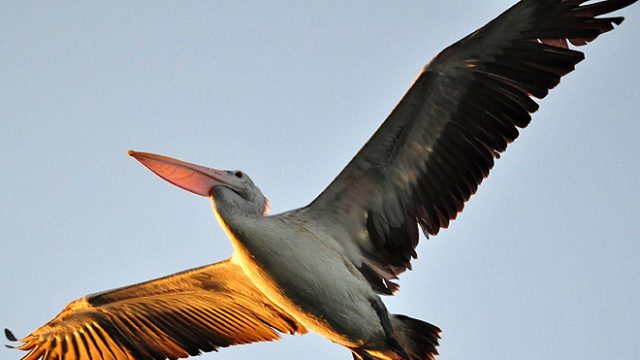SPECIAL HIGHLIGHTS
The windswept and thinly visited landscape of coastal plains, sand dunes (the highest of them 23ft tall), tidal mud-flats and shallow seasonal ponds is captivating. Point Calimere is also the spectacular site of the second-largest congregation of migratory waterbirds in India, including rare and threatened species like the Spot-billed Pelican and Spoon-billed Sandpiper, with the Bombay Natural History Society conducting annual field studies here for decades now (over 1,00,000 birds of 103 species have been recorded in peak season). Five watchtowers that are open to the public offer panoramic views, but other than the one at Ramar Padam (popular with pilgrim tourists), forest department guides are needed to reach them. A huge population of greater flamingoes arrives every winter, which is also when bottlenose dolphins are sighted by the shoreline in the mornings and evenings.
LOCATION AND HOW TO MAKE THE BEST OF IT
The Point Calimere Wildlife Sanctuary is a compact spread—just 21.47 sq km of island formed by the Bay of Bengal, the Palk Strait and swampy backwaters at the southeastern tip of Nagapattinam district in Tamil Nadu. Vehicles aren’t allowed in the core area, although a 6km paved road leads up to the villages of Kodiyakadu and Kodiyakarai (the latter is also the local name for Point Calimere) from the entrance and checkpoint 5km south of Vedaranyam. The nearest good-sized town is Nagapattinam (60km away), although Vedaranyam has some lodges too. There’s a Forest Rest House called Flamingo House (PoonaraiIllam in Tamil) at Kodiyakarai. The Wildlife Warden in Nagapattinam can be reached on +91-4365-253092 and the Range Officer at Kodiyakarai on +91-8940998988. If March to August is best for animal viewing, the prettiest time to go is salubrious November and December, when the grasslands are lush after the Northeast monsoon.

THE WILDLIFE
It was to protect the near-threatened blackbuck,one of India’s endemic mammals, that this coastal sanctuary in Tamil Nadu was established nearly half a century ago (in 1967); that resulted in the doubling of said antelope’s population in 30 years. Spotted deer, monitor lizards, lesser short-nosed fruit bats, the small Indian civet and the Indian star tortoise are among the 14 mammal, 18 reptile and nine amphibian species seen here. It’s also a particularly superb destination for birding. The December 2004 tsunami left the sanctuary under four feet of seawater and destroyed a Chola-age lighthouse, but without any lasting loss of wildlife.




